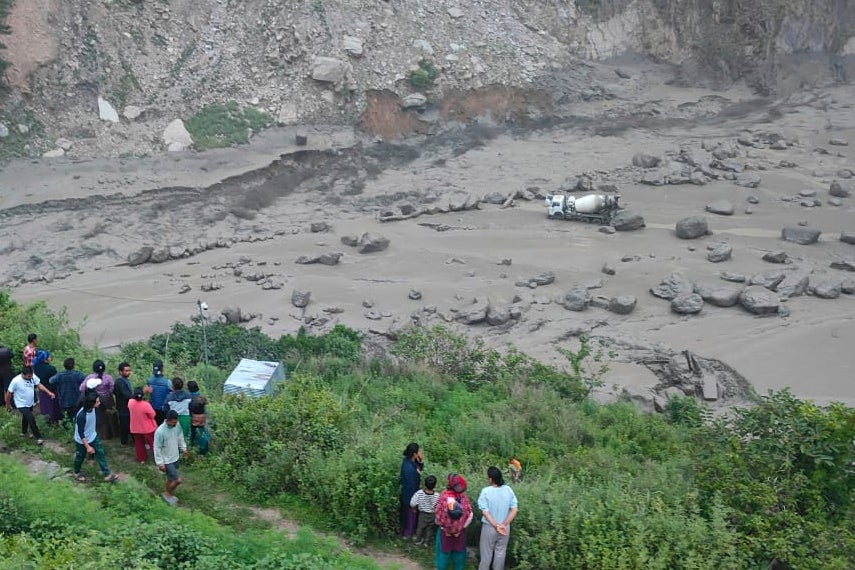
Torrential rains from tropical storm Danas caused flash floods and landslides across China even as large parts of the country continued to reel from floods and heatwaves.
Danas, downgraded from a typhoon after killing at least two people in Taiwan, made landfall on China’s eastern coast early on Wednesday, unleashing heavy rains and powerful winds across the provinces of Zhejiang and Fujian.
Packing winds of around 80kmph at its centre, Danas prompted authorities to shut schools, cancel over 100 ferry services, and warn residents along the southern coast to stay indoors.
State broadcaster CCTV reported that some areas could get up to 300mm of rain, increasing the risk of flash floods in port cities like Fuzhou and Xiamen.
In Zhejiang and Fujian, maritime authorities halted passenger shipping operations, anticipating continued disruptions as Danas moved inland towards Jiangxi province. Jiangxi’s mountainous terrain was particularly vulnerable to catastrophic flooding during heavy rains, officials said.
Although downgraded, Danas continued to carry substantial moisture, with forecasters warning that its residual vortex could still cause widespread flooding across southern China.
Meanwhile, flash floods have already displaced thousands of people further inland. In Sichuan province’s city of Yibin, over 6,000 residents have been evacuated following 14 hours of rainfall.
Footage broadcast by CCTV showed rescue workers carrying residents from floodwaters that submerged ground floors of apartment buildings.
In Gyirong, near the Himalayan foothills in Tibet, emergency teams relocated more than 300 people after a river burst its banks, submerging nearby homes.
Conditions in northern China were similarly precarious, with emergency flood protocols activated in Shijiazhuang, Hebei province, after overnight rainfall exceeded 100mm.
The flooding and landslides in China come as deadly monsoon-related events devastate South Asia. Neighbouring India has recorded at least 45 deaths due to heavy rainfall, flash floods and landslides this week, particularly in the northern states of Himachal Pradesh and Uttarakhand.

Nepal similarly faced catastrophic monsoon flooding in recent weeks, killing dozens and displacing thousands of people and washing away a key bridge to China, impacting trade.
Such severe flooding is an increasingly frequent feature of the Asian monsoon season, intensified by the climate crisis, which experts warn is causing rainfall events to become more intense and unpredictable.
At the same time that southern China is facing flooding, northeastern regions continue to suffer extreme heat. A subtropical high-pressure system has brought near-record temperatures to major cities like Shanghai, Wuhan, and Changsha, according to Reuters. Residents have been urged to stay indoors and remain hydrated amid reports of heatstroke-related fatalities.
China does not publish official tallies of heat-related deaths but a 2023 study in The Lancet estimates that nearly 50,000 people died in the country during a record 79-day heatwave last summer, the country’s worst since records began in 1961.
Chinese authorities say climate-related extreme weather events increasingly pose a major threat to public safety and economic stability. Each year, flooding alone threatens to damage billions of dollars worth of infrastructure, crops and commercial activity in the world’s second-largest economy.
Floods sweep away 18 people and bridge linking Nepal to China
Typhoon Danas threatens China with flash floods after killing two people in Taiwan
Ministers reveal plan to nearly double onshore wind across England by 2030
China on high alert for floods as record rain triggers landslides
Hero dog saves 67 lives before landslide flattens Himalayan village
Grade I listed landscape gets ‘garden for the future’ in face of climate change







